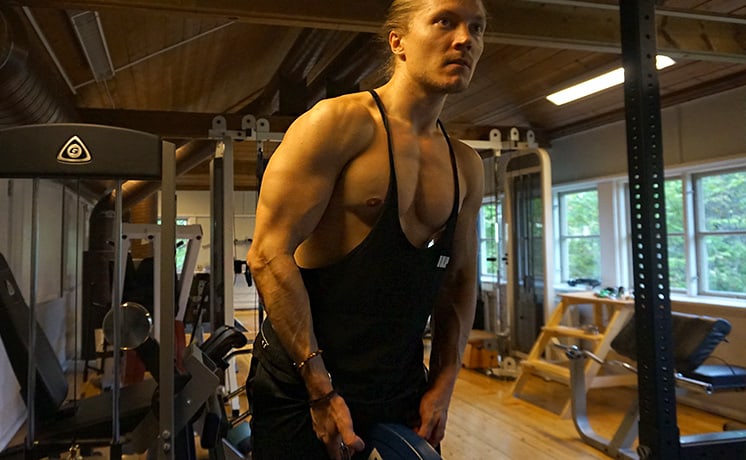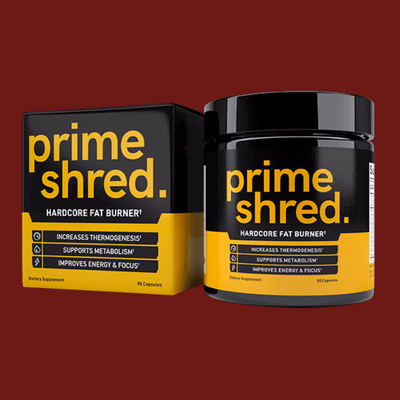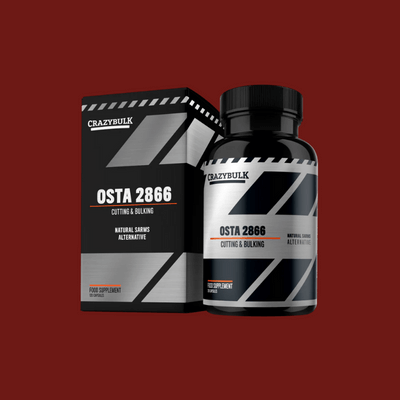
One of the most common questions people have once it’s time to lose body fat, is whether they should focus on heavy weights and low reps or light weights and high reps when they start cutting.
The reason why this question is so common is likely because they’ve heard some fitness “gurus” say you must train with heavy weights to maintain your muscle mass wen cutting, while others say you must train with light weights if you want to successfully get cut.
I decided to find out who’s right and here’s what I learned:
Should you lift heavy or light weights when cutting? In order to maintain (or build) muscle when you’re cutting, the most important thing that you should focus on is maintaining (or increasing) your strength, and this is most effectively done by lifting moderate to heavy weights.
In this post I’ll cover more in-depth why training with moderate to heavy weights are the most important thing to do when cutting, and also when light weights can be useful.
Let’s go.
SARMs Cutting Stack
- Cuts down excess fat
- Enhances metabolism
- Fast and effective results
- Fuels fat burning
Prime Shred
- Activates Body’s Fat-Burning Hormones
- Fast, whole body fat burning
- Vegetarian & vegan friendly
Table of Contents
Why It’s Important to Maintain Your Strength When Cutting
If your goal is to achieve a ripped and well-developed physique once you’re done with your cut, then your biggest priority should be to maintain muscle mass.
There are three reasons why maintaining muscle mass when cutting is important:
- Muscle tissue is metabolically responsible for much of the fat you lose when cutting.
- A larger muscle has more insulin receptors, which makes the muscles more insulin sensitive.
- You´ll look your best after your cut is over!
In order to succeed with maintaining, or even building muscle when cutting, your main goal should be to maintain your strength throughout your cutting phase. And this is most effectively done by training with heavy weights for fewer reps.
Let’s look at why this is:
Why Heavy Lifting is Better When Cutting
Lifting heavy weights will force your body to keep its muscle since your body will assume that the strength is necessary for survival.
Just think about it, if you reduce the amount of weight you’re lifting your body will assume that you don’t require as much strength anymore and it will start using your muscle mass as fuel. This is true because your muscles use up a lot of calories on a daily basis, so much that when your body assumes that you truly don´t need the extra muscle, it will see it as expendable.
Furthermore, lifting heavy weights is less stressful overall to the body, which will lead to better recovery when cutting. (More on this soon)
Finally, it´s easier to keep control over your strength progression when doing heavy lifts like 4-6 rep bench presses or squats, rather than doing 12-15 rep flyes or leg extensions.
When Light Weights Can be Useful
So, we´ve covered that using heavy weights is the most effective and easy way to keep muscle mass while cutting.
But when and how can you use light weights to keep your muscle mass? Using light weights can be a good way to add some extra volume which can help you burn more calories, as long as you’re not doing too much of it.
Many people use a ton of light weight training just to burn more calories, but when your body is in a calorie deficit (as it should be when cutting) your body is already “handicapped” when it comes to recovery. Doing too much volume can actually cause you to indirectly lose muscle mass. In other words, your calorie deficit should mainly come from the diet, not from your training.
The Two Types of Muscle Growth
- Myofibrillar hypertrophy
- Sarcoplasmic hypertrophy
Myofibrillar hypertrophy means the actual growth of the muscle fibers while Sarcoplasmic hypertrophy means the growth of the non-contractile tissues found in muscle (glycogen, triglycerides, water, minerals, etc.).
The reps, sets, rest times and the amount of weight we use determine which muscle growth we stimulate the most.
When doing heavier lifting between 4-10 reps you mostly stimulate Myofibrillar hypertrophy, because after you’ve made your neurological adaptation and your exercise technique is efficient, the only way to get stronger is to get bigger muscle fibers.
And when lifting lighter weights you mainly stimulate Sarcoplasmic hypertrophy, This type of training depletes high quantities of muscle glycogen which forces the body to super compensate your glycogen stores to better handle future workouts of similar training.
So, the main point here is that only a small percentage of your muscle growth comes from Sarcoplasmic hypertrophy, because your muscles quickly max out the amount of glycogen it can hold. After that, the only thing that will make your muscles grow is to get stronger.
Probably around 70-80% of your overall muscle growth will come from the increased size of your muscle fibers, and not from pump training. Because of this, I encourage you to focus mainly on getting stronger rather than focusing on “chasing the pump”.
“Cutting Up” a Muscle
People that are new to training often think that you can “cut up” a muscle. Essentially what they believe is that you can make a certain muscle become more visible by burning off fat around it. One example could be where someone does a ton of bicep curls day in and day out in hope that this would lead to fat loss only around the biceps.
But in order to lose body fat, no matter where you want this fat to be lost, you need to be in a calorie deficit. There is no other “secret” formula to lose body fat around a specific body part than simply being in a calorie deficit. Your genetics will determine where on the body you’ll lose fat first, and once you’ve gotten lean enough, everything will look cut.
Use Both Heavy and Light Weights!
In general, I would say that you can train with both heavy and light weights, as long as you try to maintain/increase strength on your key-lifts, such as Military press, Bench press, Squats and Deadlifts by lifting heavy.
As long as you have those staples in your program you can train with various isolation exercises with lighter weights on top of that without too much struggle. As long as you´re maintaining or increasing strength you have nothing to worry about, but if you keep dipping in strength, you´ll most likely lose muscles too, especially when in a calorie deficit.
Example Program
So, here’s an example of a good routine for beginners:
Workout A – Upper Body
- Incline Bench Press – 5 sets of 4-6 reps
- Weighted Pull-ups – 5 sets of 4-6 reps
- Dips – 3 sets of 6-8 reps
- Cable Rows – 3 sets of 6-8 reps
- Bicep Curls – 3 sets of 12-15 reps
Workout B – Lower Body
- Barbell Squats – 5 sets of 4-6 reps
- Romanian Deadlift – 3 sets of 4-6 reps
- Leg Press – 5 sets of 6-8 reps
- Seated Calf Raises – 3 sets of 12-15 reps
- Hanging Knee Raises – 3 sets of 12-15 reps
And here are the workout notes for this routine:
- Train 3 times per week on non-consecutive days. For example:
- Monday – Workout A
- Wednesday – Workout B
- Friday – Workout A
- Monday – Workout B
- Rest 3 minutes between sets. Except calf raises and knee raises where you rest 1-2 minutes.
- When you hit the required reps for all sets, increase the weight with 2.5 kg (5 lbs) on all sets the following workout. If you lose a few reps on the upcoming workout, no worries. Your goal for the following workout is to add back the reps in those last sets so you can increase the weight once again.
- Use a lifting app or paper to track your progress.
- You can also change some of the exercises after your needs. For example, change weighted pull-ups for pulldowns if you can’t manage a full set of pull-downs etc.
After 3-6 months on this training routine, you can most likely upgrade to a more advanced routine.
Which could be this novice to early intermediate routine (which will usually work for another 1-2 years on average):
Novice to Intermediate Routine
Monday – Upper Body – Chest Emphasis
- Incline Bench Press – 4 sets of 4-6 reps
- Cable Rows – 4 sets of 4-6 reps
- Flat Dumbbell Bench Press – 3 sets of 6-8 reps
- Seated Shoulder Press – 3 sets of 6-8 reps
- Rear Delt Dumbbell Flyes – 3 sets of 12-15 reps
- Skullcrushers – 5 sets of 12-15 reps
Wednesday – Lower Body
- Barbell Squats – 5 sets of 4-6 reps
- Romanian Deadlift – 3 sets of 4-6 reps
- Leg Press – 5 sets of 6-8 reps
- Seated Calf Raises – 5 sets of 12-15 reps
- Hanging Knee/Leg Raises – 5 sets max
Friday – Upper Body – Back & Shoulder Emphasis
- Weighted Pull Ups – 4 sets of 4-6 reps
- Standing Barbell Shoulder Press – 4 sets of 4-6 reps
- Barbell Rows – 4 sets of 6-8 reps
- Incline Dumbbell Bench Press – 3 sets of 6-8 reps
- Lateral Raises – 4 sets of 12-15 reps
- Spider Curls – 5 sets of 12-15 reps
And here’s how to progress and get stronger over time with this routine:
- Rest 3 minutes between sets for the compound exercises and 1-2 minutes for the isolation exercises.
- When you hit the required reps for all sets, increase the weight with 2.5 kg (5 lbs) on all sets the following workout. If you lose a few reps on the upcoming workout, no worries. Your goal for the following workout is to add back the reps in those last sets so you can increase the weight once again.
- Use a lifting app or paper to track your progress.
This routine has more volume (amount of work) which is often required as you get more advanced. At this point, most of your strength gains will lead to muscle growth as well.
*In both of the routines outlined above you’re using straight sets, for example 5 x 4-6 reps. This is where you use the same weight for all your sets.
Another very powerful training style to use when cutting is Reverse Pyramid Training where you start with your heaviest set first and then follow that up with lighter sets afterwards. This is a very effective way to train. You can learn more about it here.
Conclusion
Always focus on getting stronger/or maintain your strength when cutting, as this will ensure that you´re not losing muscle mass. The easiest way to get stronger and maintain strength will be by doing heavy weight training.
You can use light weight training as well, but this would mostly be to add volume and to help ramp up calorie burn a bit.
Since 70-80% of your overall muscle growth will come from the increased size of your muscle fibers, which is caused by heavy weight training and not from pump training, I encourage you to focus mainly on getting stronger rather than focusing on “chasing the pump”.
What’s Next?
There are other things that can affect how well you maintain strength and muscle mass during your cut, not just how you train. Things like:
- Your calorie and macro intake
- Sleep time & quality
- Stress
- Etc
On this list, the most important things and the ones you can control the easiest are your calorie and macro intake. If you want to learn everything there is to building an aesthetic looking lean and muscular physique depending on your individual starting point, then read my completely free guide called: How to build an aesthetic physique, which you can read here!



